The world of ecommerce continues to boom, and dropshipping remains a powerful way to tap into it with minimal investment. Shopify – the leading platform for online stores – makes it especially easy to launch a dropshipping shop. In dropshipping, you sell products without stocking them: when a customer orders, the supplier ships the item directly to them. This means you can start a business with just a laptop and an internet connection. In 2025, that model is still thriving: the global dropshipping market was valued at $366 billion in 2024 and is projected to surge toward $594B by 2028. In fact, some analysts predict it could reach $1.25 trillion by 2030. Shopify itself has seen record-breaking holiday sales (over $9.3 billion during Black Friday–Cyber Monday 2024) and notes that 62% of Amazon sales are driven by third-party sellers using models like dropshipping. All this suggests that, with the right products and strategy, dropshipping on Shopify can still be a winning formula in 2025.
What Is Shopify Dropshipping?
Dropshipping on Shopify means using the Shopify platform to run a dropshipping business. In simple terms, a dropshipper lists products on their Shopify store without holding inventory. When an order comes in, the dropshipping supplier (often via a Shopify app or direct integration) takes care of packing and shipping the item to the customer. Shopify is particularly well-suited for this model because it provides specialized apps and tools (like CJdropshipping) to import products and automate order fulfillment. For example, Shopify’s CJdropshipping app is a free supplier marketplace of U.S.-based brands; merchants can browse vetted products with transparent pricing and import them into their stores. The big advantage is low startup cost and flexibility: you don’t pay for products until after you make a sale. The downside is that you rely entirely on suppliers for quality and shipping. In any case, Shopify dropshipping means you focus on marketing and customer service, while your suppliers handle logistics.
Why Dropshipping Products on Shopify Still Win in 2025
You might wonder if dropshipping is “dead” or too competitive by 2025. The data say otherwise. Global ecommerce is still growing at a breakneck pace – the total ecommerce market is projected at $4.8 trillion in 2025 and expected to hit $7.5 trillion in 2024. Within that, the dropshipping segment alone was $366B in 2024 and climbing rapidly. Consumers continue to search for and buy products online (Google Trends shows stable interest in “dropshipping” over time). Shopify notes that a large share of online retail (e.g. 62% of Amazon sales) comes from third-party sellers using dropshipping-like models. Importantly, Shopify-based stores have generated record sales during peak shopping periods.
What makes dropshipping appealing is its low barrier to entry. You can launch a store with very little upfront capital – just the cost of your Shopify subscription and marketing. This accessibility allows entrepreneurs to test ideas quickly. As Printful points out, dropshipping remains “an attractive business model … as long as you work with reliable suppliers to ensure solid product quality”. Indeed, “reselling cheap, ready-made items…is no longer the way to run a profitable dropshipping store,” but selling well-researched, high-value products to eager markets still works.
Even though competition can be fierce (many merchants might sell the same products), the opportunity lies in differentiation. “Dropshipping is still a massive part of a merchant’s journey,” says Shopify’s research. In other words, it often serves as a starting point: you test products, learn your customers, and then reinvest profits to grow. The 2025 stats reinforce that consumers are still buying online – 42% of U.S. shoppers plan to spend more online in 2024 – and they expect fast, convenient shopping. By focusing on trending niches, smart marketing (social media ads, influencers, etc.), and reliable fulfillment, Shopify dropshippers can thrive even today.
How to Find High-Converting Dropshipping Products on Shopify
Finding the right products is at the heart of dropshipping success. High-converting items share a few common traits: they solve a problem or create a strong desire, stand out visually, and cater to an eager audience. Look for products that are lightweight (low shipping cost), not readily available at local stores, and have a “wow” factor for ads and social media. For example, CJdropshipping advises searching for products with solid profit potential, durable profit margins, and broad appeal. They also point out that tools like Google Trends and TikTok can reveal what’s heating up.
Data-driven research: Start with keywords and trends. Use Google Trends and keyword tools (Keywords Everywhere, etc.) to see if search interest for a product or niche is rising. Shopify suggests combining keyword research (to gauge demand over time) with product research (to see what’s popular on marketplaces). For instance, Shopify’s guide notes that winners often come from niches with sustained search volume, backed by both keyword data and competitor analysis. In practice, you might notice a surge in “satin scrunchies” or “magnetic eyelashes” on TikTok and confirm those terms are trending on Google.

Social media & market signals: Don’t ignore social commerce. TikTok, Instagram Reels, and YouTube Shorts are now major discovery platforms for products. When a product goes viral in short-form video – think of giant smartphone projectors or cute pet gadgets – dropshippers can ride that wave. CJdropshipping recommends watching “viral videos on social media sites (TikTok, Instagram Reels) to identify what people are talking about.” Also check marketplaces: Amazon Bestsellers, Etsy trending products, or specialized apps (like the product sections in Shopify Collective or dropshipping apps) to see what’s moving. For example, CJ’s list of trending products is informed by data from Amazon Movers & Shakers, AliExpress Hot New Products, and Shopify brand bestsellers.
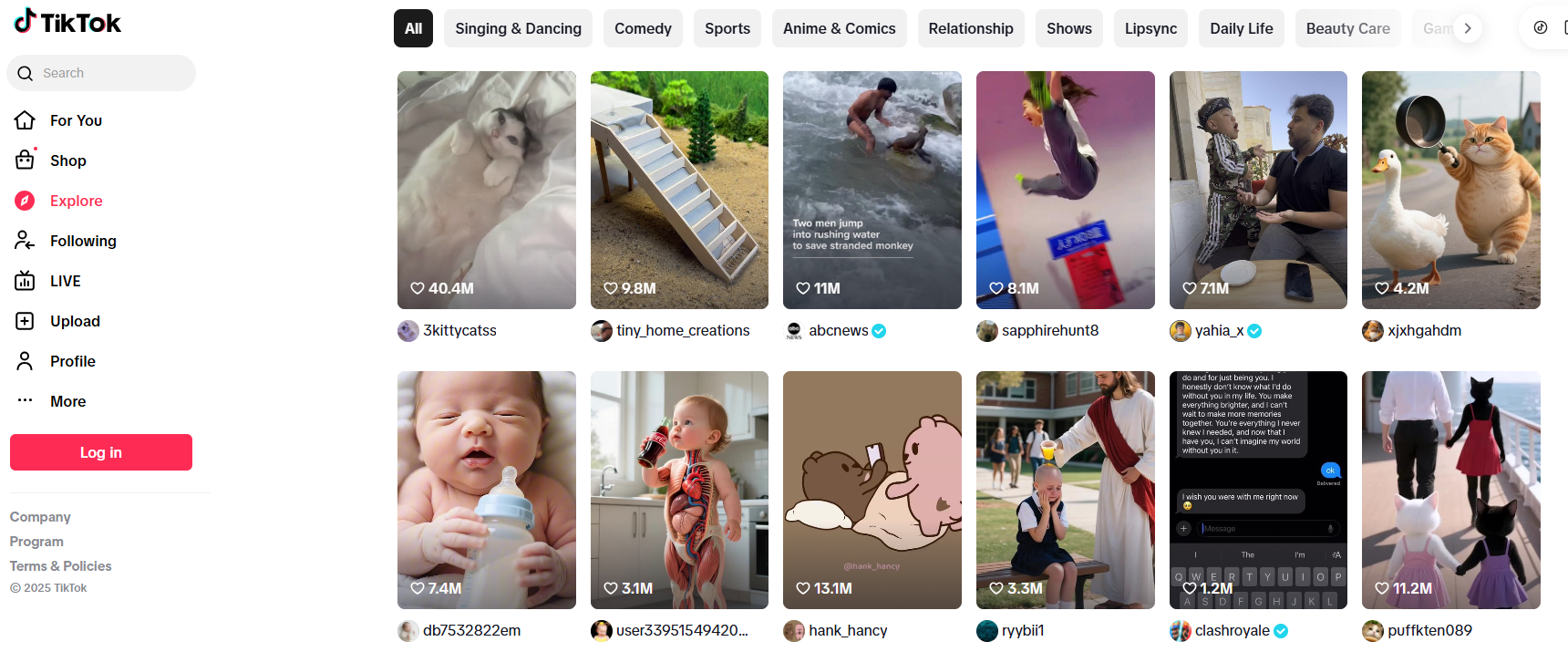
Supplier catalogs: Dropshipping suppliers often highlight hot items. Apps like DSers, Spocket, or the CJdropshipping platform curate lists of fast-selling products. Shopify’s Collective lets you browse products from established brands with transparent margins. CJdropshipping and other print-on-demand platforms can identify trending merchandise designs. Always cross-check any candidate product by reading supplier reviews and ordering a sample – quality issues kill conversions.
Validate quickly: Before committing, test with a small ad campaign or collect email interest. High conversion means the product not only has demand, but also sells at a reasonable price with your profit. Keep margins in mind: products that sell for $10 may require higher volume than a $50 item. In short, use data (search trends, ad performance), supplier insight, and market feedback together. Shopify summarizes it well: combine keyword research (Google Trends) with product research (dropshipping apps, marketplaces) to build a full picture of your niche.
Top 20 Dropshipping Products on Shopify
Below is a curated list of 20 specific products that have been identified as “winning picks” for Shopify dropshippers in 2025. These items span beauty, tech, home, and kids categories, and each has shown strong demand on social media or in market data. Citations indicate sources that spotlight these products’ popularity or success:
-
LED Face Mask (Beauty LED Mask): A high-tech skincare gadget that lights up the face with LEDs to treat skin issues. Beauty influencers often highlight these as a “spa-at-home” product.
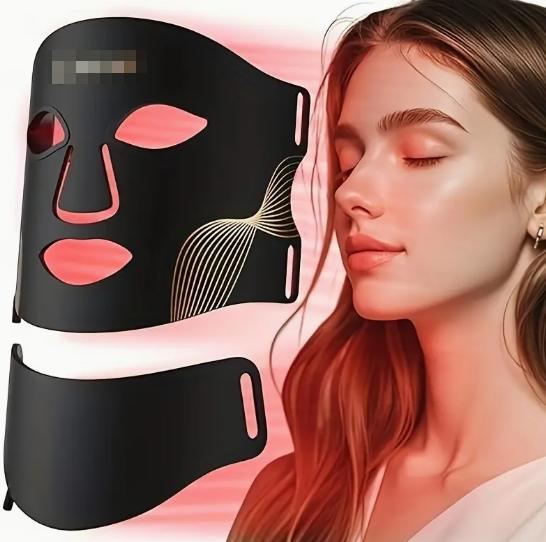
-
Ice Roller (Facial Ice Roller): A handheld icy massage roller for the face. TikTok and YouTube have many “glow-up” videos featuring these; they promise to reduce puffiness and brighten skin.
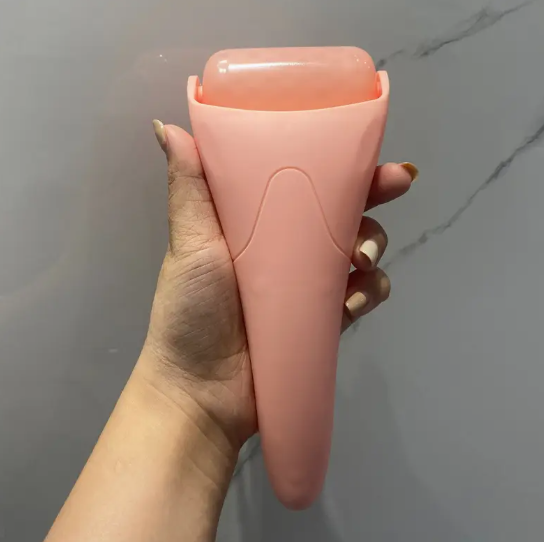
-
Portable Makeup Fridge: A mini skincare refrigerator that keeps creams and serums cold. Popular with beauty enthusiasts (seen often in vanity tour videos). [CJdropshipping’s list notes it as a trending beauty item].

-
Heated Eyelash Curler: An electric curler for lashes (heat-activated). Beauty bloggers are swapping traditional curlers for these. CJdropshipping lists it among top-selling beauty tools.
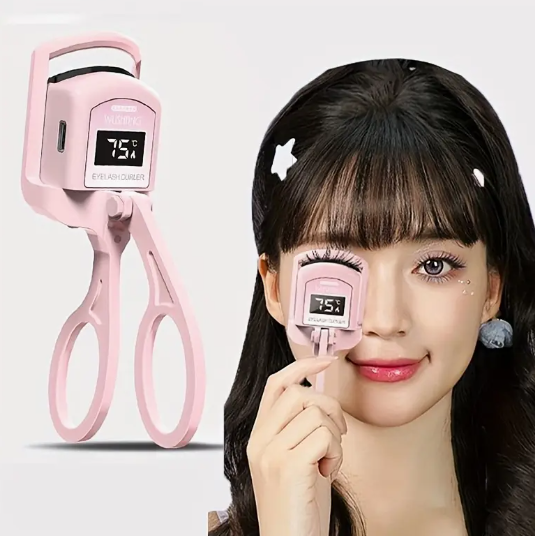
-
Magnetic Eyelash Kit: An eyeliner-and-lash set where lashes attach magnetically. This “mascara-free” eyelash trend is big on TikTok, appealing as a reusable beauty gift (bundle with eyeliner for upsell).
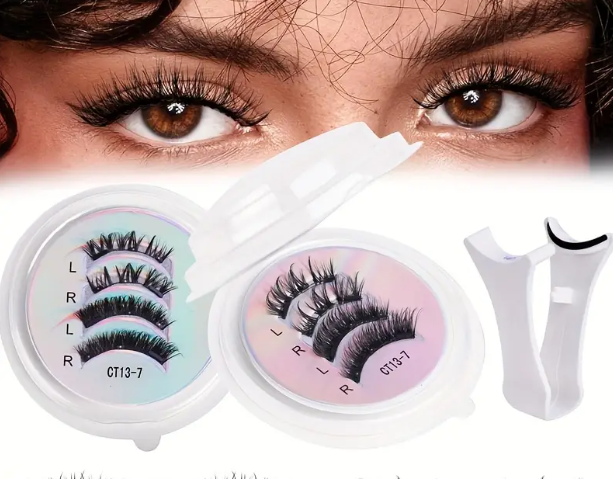
-
Wireless Magnetic Charger Stand: A sleek charging stand for phones (and sometimes AirPods) that uses magnets. As phones have magnets built-in (e.g. iPhones), these stands can charge without plugs. CJdropshipping highlights magnetic wireless chargers as high-converting tech accessories.
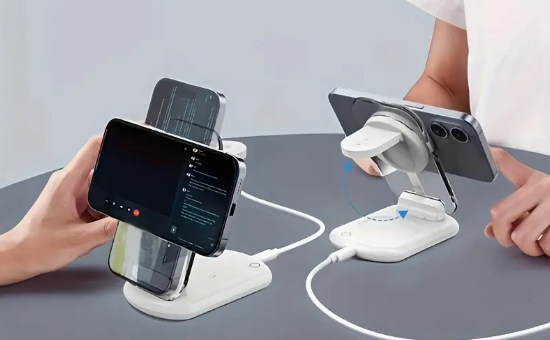
-
Adjustable Laptop Stand: A portable desk stand for laptops/tablets (height-adjustable). With more remote work, these are in constant demand. CJ’s research spotlights them as a top tech item.
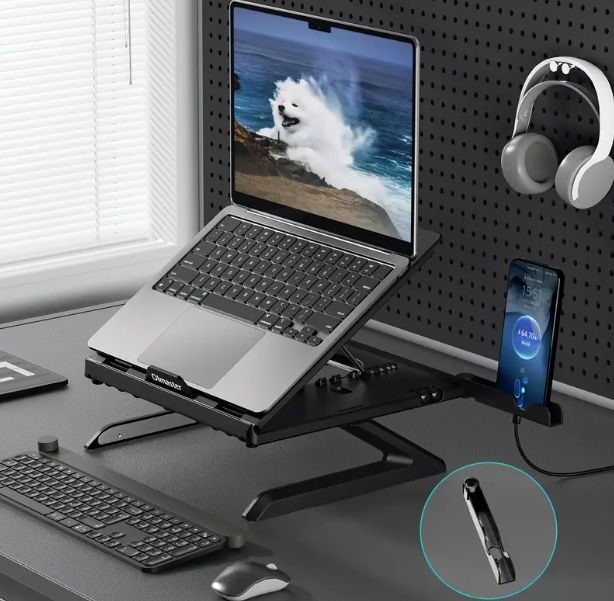
-
Mini Bluetooth Tracker (Key Finder): A small tag that helps find lost items (keys, wallets) via Bluetooth and phone app. Practical tech gift, often seen sold in bundles. CJ identified this as a winning dropshipping gadget.
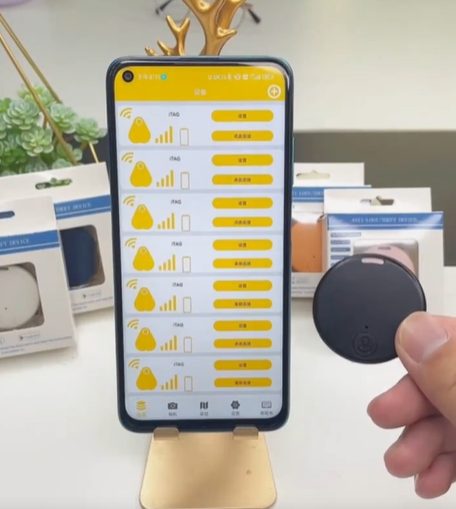
-
Clip-on Ring Light (for Phone): A small LED ring light that clips to a smartphone for better selfies and videos. Massive hit with content creators; CJ lists it as a popular product.

-
Noise-Canceling Sleep Headphones: Over-ear headphones or headbands designed for sleep (playing soothing sounds). Useful for travel and rest. These turned up as a trend in CJ’s analysis.

-
Silicone Suction Plate Set (Kids): A set of baby plates/cups that suction to the table to prevent spills. Practical baby essential – CJ’s research named these among the top kids’ products.
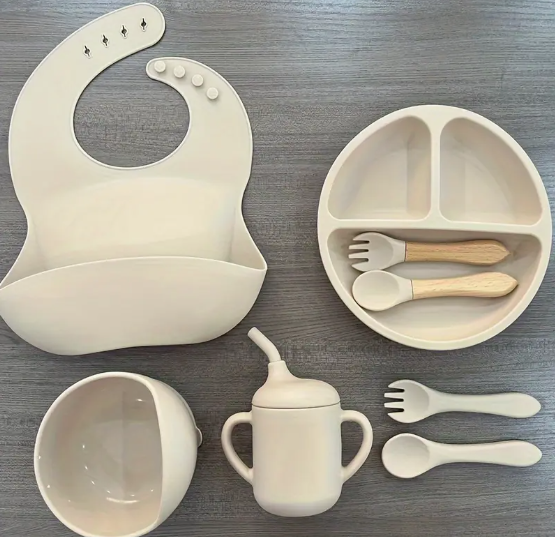
-
Non-Spill Snack Container (Kids): A silicone container that lets toddlers reach snacks without making a mess. Another baby/kids bestseller for dropshippers.

-
Foldable Baby Bathtub: A collapsible baby tub for home use, saving space. CJ lists this as a trending baby item because of its convenience.

-
Multifunction Bamboo Couch Arm Tray (Home): A bamboo organizer that fits over the arm of a sofa to hold remotes, drinks, etc. It appeals to home decor shoppers looking for clever storage, and CJ highlights it.

-
Minimalist Wall Hooks (Set of 4): Simple adhesive wall hooks for hanging coats, towels, etc. These organization products are lightweight, cheap to ship, and CJ has them on their hot list.

-
Reusable Cleaning Slippers: Slippers with microfiber soles that you can walk around in to mop floors. A whimsical yet practical home item; CJ’s list includes them as a top pick.
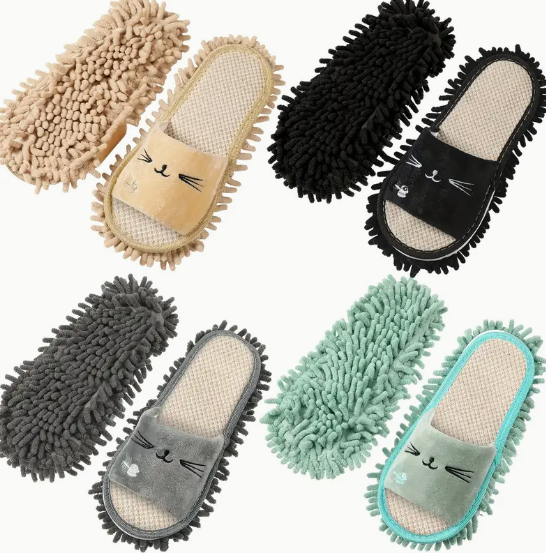
-
Under-Sink Organizer Rack: A tiered shelving unit to fit under kitchen or bathroom sinks. It’s one of those “life hack” items trending on home-improvement TikTok.
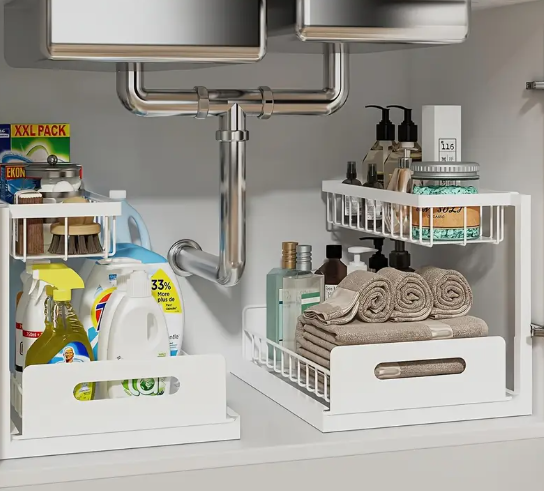
-
Sunset Projection Lamp: A lamp that projects a colored “sunset” light onto a wall or ceiling. Seen frequently in aesthetic home decor reels. CJ identifies it as a “trend factor” product.

-
LED Flameless Candles: Electric candles with flickering LED lights, often with a remote. These are very popular in fall/winter for cozy ambiance (CJ’s Q4 list labels them #1 for the season).

-
USB Rechargeable Hand Warmer: A pocket-sized rechargeable warmer (often credit-card sized). Practical winter item and gift – CJ’s Q4 list spotlights these for cold-season demand.

-
Matching Family Pajama Sets: Cotton pajama sets for the whole family (e.g. Christmas patterns). A perennial holiday bestseller (featured on CJ’s Q4 picks) because they photograph well for cards and gift-giving.

These 20 picks are examples of products currently riding high on demand. Some are evergreen, others (like pajamas and candles) are seasonal winners. In any case, they share attributes of winning dropship items: they solve everyday problems, look great in social media content, and can be easily promoted via influencer marketing or targeted ads.
Dropshipping Products on Shopify for Q4 2025
The fourth quarter (October–December) is make-or-break time for ecommerce. Holiday seasons like Halloween, Black Friday, and Christmas turn Q4 into the busiest shopping period of the year. Shopify reports its merchants hit $9.3 billion in sales over Black Friday–Cyber Monday 2024. Projections for Q4 2025 are even stronger. To capitalize on this, dropshippers should plan well ahead. Modern consumers have shifted to early shopping: CJdropshipping notes that in 2024 over 56% of US shoppers began buying gifts before November. So your Q4 product pages should ideally launch by late September.
As for product types, emotional and experience-driven gifts are key. CJ’s Q4 report identifies top holiday products that resonate with buyers:
-
Seasonal Decor & Home Gifts: LED flameless candles and projection lamps create a cozy ambiance. Christmas countdown calendars, decorative wall projectors, or thematic baking molds also do well. Customers love items that make the home festive.
-
Fashion & Apparel: Matching holiday pajamas and warm clothing (fleece leggings, plaid loungewear) are big sellers in Q4. These are often impulse buys for family photos or stocking stuffers.
-
Electronics & Gadgets: Tech gifts remain hot – mini projectors, Bluetooth trackers, wireless earbuds (CJ’s Q4 picks include projectors #2 and earbuds #29). USB-powered items like hand warmers and charging lamps see demand in colder months.
-
DIY & Hobby Gifts: Seasonal foods and entertainment gear sell well. For example, charcuterie board sets (CJ #9) and cocktail shaker kits (#26) are popular as gift-worthy kitchen products. Craft kits, educational toys, or home fitness items can also spike if they tap into holiday lifestyle content.
-
Beauty & Personal Care: Giftable beauty tools – satin heatless curlers, magnetic eyelashes, LED vanity mirrors – continue selling as they do well in “regift-this” videos. Bundling these with seasonal gift sets (e.g. a spa kit or skincare bundle) increases their appeal.
CJdropshipping’s Q4 trends emphasize emotion and perceived value. Shoppers are looking for gifts that evoke joy or convenience, not just the cheapest price. Bundled products (e.g. pajamas for “the whole family”, candle sets with accessories) have high value perception. Quality presentation (festive packaging, thank-you notes) matters.
In practical terms, that means setting up your store for Q4: populate it with holiday-themed products and gift bundles by October 1st, ensure your marketing (ads, emails, social media) starts early, and build urgency (“order by X date for Christmas delivery”). Also prepare your suppliers: confirm inventory, check shipping timelines, and consider carriers or warehouses that can meet holiday deadlines. CJ advises dropshippers to scale fulfillment and have fast options ready: delays in Q4 can ruin margins and reputation.
In summary, the top Q4 products often mirror the year-round winners above but with a seasonal twist. Think cozy + giftable. According to CJ’s analysis, strong Q4 candidates include LED candles, hand warmers, party kits (charcuterie/wine sets), and family items (pajama sets). By focusing on these and launching early, Shopify dropshippers can capture the surge of holiday shoppers.
A Step-By-Step Dropshipping Guide on Shopify
Getting started on Shopify is more straightforward than it sounds. Here are the key steps a new dropshipper should follow:
-
Decide if Dropshipping Fits Your Goals: Dropshipping is ideal if you have marketing or niche expertise but limited capital. It allows you to start with minimal inventory investment. However, be prepared for lower margins and intense competition. Ensure you’re comfortable focusing on the marketing/sales side rather than product development.
-
Choose Your Niche: Identify a specific market segment (e.g. eco-friendly home goods, pet fashion, outdoor fitness, etc.). Shopify emphasizes picking a niche that matches either your passion or clear market demand. Use keyword research tools (Google Trends, Keywords Everywhere) to find niches with growing interest. For example, if searches for “solar lanterns” are rising year-over-year, that could signal an opportunity. Assess the niche’s audience size and willingness to spend. A well-defined niche makes product selection and marketing easier.
-
Research Competitors: Analyze existing Shopify stores and other retailers in your chosen niche. See which products they sell, how they price them, and what marketing angle they use. This can reveal customer pain points, saturated products to avoid, or gaps in the market. Keep a spreadsheet of your findings for easy reference. Competitor intel guides you on product features to emphasize and ideas for differentiation.
-
Find a Dropshipping Supplier: Look for suppliers who serve dropshippers. Popular options include CJdropshipping, AliExpress, Spocket, Oberlo/DSers (for AliExpress integration), Printful (for custom merch), and Shopify’s own Collective (curated brands). When choosing, consider shipping speed and reliability. Does the supplier have warehouses in the regions you want to sell to? (Fast shipping is crucial.) Do they allow ordering individual units (no or low minimums)? Check their policies on returns and quality control. Shopify advises: “connect with verified suppliers and read their reviews…look for fair fees, low order minimums, fast reliable shipping, and good support”. In practice, you might start with CJdropshipping (for low prices and global warehousing) or DSers/AliExpress (huge product range but slower shipping), and consider adding Spocket or Modalyst later for U.S./EU stock.
-
Select Products and Set Prices: From your supplier’s catalog, pick a handful of products to start. Prioritize those that fit your niche and showed up in your research. Make sure to read existing customer reviews of the products. Then, order samples of top candidates to check quality, packaging, and shipping time. Only launch the products that meet your standards. Shopify recommends stocking items from suppliers close to your target market when possible (even opting for expedited shipping like ePacket). Next, price your products. Calculate all your costs (product cost, Shopify fees, payment fees, ads, etc.) and then add a reasonable markup. A common approach is to target a 20–40% profit margin (Shopify’s Collective products often fall in that range). Remember competitor pricing: being cheaper than others can win sales, but too low hurts profit.
-
Build Your Shopify Store: Create a Shopify account and start designing your store. Choose a clean, mobile-responsive theme that suits your niche. Customize your branding (logo, colors, fonts). Write clear product descriptions and use high-quality images – if needed, get product photos from your supplier or create mockups. Enhance your product pages with supporting content: consider adding an FAQ, sizing guides, or blog content that helps explain product use (this also helps SEO). Set up key pages: About Us, Contact, Shipping Policy, and Returns Policy (Shopify has generators for these). Install essential apps: a dropshipping app to import products (CJdropshipping, DSers, etc.), a currency converter if selling globally, email marketing, and review/upsell apps. Set up your payment gateways (e.g. Shopify Payments, PayPal).
-
Optimize and Launch: Before going live, do a test order to ensure the checkout flow and fulfillment process work smoothly. Adjust any page elements or policies based on that test. Once ready, launch your store and announce it (on social media, to friends, etc.). Be prepared to iterate: monitor which products get traffic or add to cart and which ones convert. Use Shopify’s analytics and any ad platform data to refine your strategy.
-
Market Your Store: Drive traffic through ads (Facebook/Instagram, TikTok), SEO (target keywords relevant to your products), social media content (showing the product in use), and email marketing. Consider collaborating with micro-influencers or affiliate marketers. Shopify suggests focusing on content that resonates with your niche (e.g. “morning routine” videos for beauty products, or “before-and-after” demos for organizers). Regularly update your inventory: introduce new products based on trending data, and drop low-performers.
Each of these steps involves ongoing work. Shopify’s published guide outlines these stages in detail, emphasizing supplier selection, pricing strategy, and store design. By following this roadmap methodically, beginners can launch and grow a dropshipping shop on Shopify.
How to Source Reliable Suppliers for Dropshipping Products on Shopify
Having good suppliers is crucial. A reliable supplier ensures on-time delivery, good product quality, and responsive communication. Here’s how to find and evaluate them:
-
Key Qualities to Look For: According to CJdropshipping’s expert guide, a top supplier will offer consistent product quality (request samples to verify this), global warehousing (so they can ship locally), seamless tech integrations (so orders sync to Shopify automatically), and responsive support. They should hold real inventory (so you don’t experience frequent stockouts) and have clear return/refund policies. Shopify specifically advises checking for fast, reliable shipping and low order minimums. If a supplier consistently fails (late shipments, poor packaging), drop them even if the price is low – a bad customer experience can sink your store.
-
Top Dropshipping Platforms: While there are many, some of the most popular include:
-
CJDropshipping: A China-based supplier network that stands out for budget-friendly prices and customization options. CJ offers deep integrations with Shopify and warehouses in the U.S., EU, and Asia. Merchants praise CJ for letting you order single units and even customizing packaging. For example, CJ’s “virtual overseas warehouses” let you bulk-ship stock to the U.S. or Europe and fulfill orders domestically, which speeds up delivery. Its platform can also suggest winning products based on your target profit margin.
-
AliExpress/DSers: The classic choice, with a massive range of products. AliExpress is best for testing cheap products quickly. However, shipping is often slow (15–30 days) and supplier quality can vary. DSers is the Shopify app that automates AliExpress fulfillment. Many new dropshippers start here due to the low barrier, but it requires patience and good product vetting.
-
Spocket: Focuses on US/EU suppliers, so shipping is very fast (often 2–5 days). The selection leans towards higher-quality home goods and fashion. Downsides are higher prices and monthly fees. It’s ideal if you’re willing to pay more for faster shipping and a more curated catalog.
-
Printful (and other POD providers): If you want to sell print-on-demand merchandise (custom T-shirts, mugs, etc.), Printful and similar services (Printify, Gelato) let you do that. They handle printing and shipping of custom goods, so there’s zero inventory risk. Margins tend to be lower due to base costs, but branding is easier.
-
Wholesale & Dropshipping Directories: Services like SaleHoo or Doba list vetted suppliers (some even in the US). You can find niche-specific suppliers here, though fees may apply. These are worth considering for specialized products or higher volume deals.
-
Shopify Collective: Not a supplier in the traditional sense, but a network of vetted U.S. brands that allow dropshipping. Using Collective, you can pick from thousands of products made in the USA or by known brands. This ensures reliable shipping and quality (at the cost of lower profit margins). Shopify reports Collective products generally have 20–40% margins, along with transparent shipping rates.
-
-
Vetting and Relationships: Beyond picking the platform, vet individual suppliers carefully. Check their track record: have they been reliable? Read reviews . Ask questions: how quickly can they handle returns? Do they allow order samples? Good suppliers will welcome a sample request and show real photos of products. Over time, treat your supplier as a partner: negotiate better prices or faster shipping based on your sales volume. The better your relationship (regular orders, clear communication), the more willing they’ll be to give you priority on new hot products and lower costs.
In short, use a mix of supplier sources. For example, some experts advise using multiple suppliers: one for quick testing (like CJ or AliExpress for trendy new products), and others (like Spocket or Shopify Collective) for stable, scalable items. Always prioritize reliability and shipping speed, as these directly impact your customer’s experience and your reputation.
Pricing & Margin Tips for Dropshipping Products on Shopify
One challenge in dropshipping is managing profit margins. Because anyone can copy your product listing, there’s often intense price competition. Here are tips to keep your pricing savvy:
-
Cover All Costs: First, calculate the total cost of each product: supplier price + shipping + transaction fees + your marketing/overhead costs. Shopify recommends then adding your desired profit on top. A simple formula is to pick a profit margin (e.g. 20–30%) and set the selling price accordingly. For example, if a product costs you $10 total and you want 30% margin, aim to sell around $14 (or $14.99 after rounding).
-
Be Competitive: Research what similar products sell for. If your price is much higher, conversions may suffer; much lower, and you leave money on the table. As one source notes, dropshippers “often pay a premium to source inventory, and with many selling comparable products, there’s a ceiling on how much profit you’ll make”. In practice, many successful dropshippers settle for around 20–40% margins on most items. (Shopify’s Collective network suggests most margins fall in that range.)
-
Use Markup Strategies: A common rule of thumb is keystone pricing: double the cost (COGS) to set a retail price. In dropshipping this might be aggressive, but doubling your costs can give an easy target. Alternatively, add a fixed markup (e.g. +$5 on every item) or a percentage (e.g. +50%). The key is consistency.
-
Psychological Pricing: Small tweaks in pricing can boost sales. Ending prices in .99 or .97 often converts slightly better than a round number. You can also display “original” vs “sale” prices to leverage anchoring. For example, show a crossed-out $29.99 next to your $19.99 price (making it look like a deal).
-
Upsells and Bundles: Since margins can be slim, increase your average order value (AOV) through upsells. Offer a related product at checkout (“customers also bought”), or sell bundle packages (e.g. a pajama plus slippers). Dropship pricing guides emphasize that upselling complements can greatly boost profit without much extra ad cost. For instance, CJdropshipping suggests bundling complementary items (like eyeliner with eyelashes) to justify higher prices and increase perceived value.
-
Test and Adjust: Watch your numbers. If a product with a 30% markup isn’t selling, you may need to drop the price or improve the product page. Conversely, if an item sells out quickly, there may be room to raise prices. Don’t be afraid to try A/B tests with different price points to find the sweet spot.
In summary, don’t expect 80% margins; treat dropshipping as a volume game. Carefully mark up costs (many begin around 2× cost or 30% margin), but balance this against competitiveness. Use strategic pricing (bundle deals, tiered discounts, social proof) to boost sales without slashing your profits. And remember, pricing is not one-size-fits-all – tailor your strategy per product category and customer feedback.
Fulfillment & Shipping Strategies for Dropshipping Products on Shopify
Because you don’t hold inventory in dropshipping, fulfillment is entirely outsourced – which has pros and cons. Understanding how it works and planning for it is critical:
-
How Dropshipping Fulfillment Works: When a customer orders, you (the retailer) pass that order to your supplier, who then packages the product and ships it to the customer. The customer usually receives the shipment under your store’s name (labels can show your logo). Shopify’s guide explains there are three players: manufacturer, supplier, and retailer. You, as the retailer, never touch the product physically. That saves you huge hassle and cost, but it means your customer’s experience (shipping speed, packaging) depends entirely on your supplier.
-
Watch Out for Delays: A big drawback of dropshipping is potentially long delivery times. Shopify notes that “shipping times and delays are common” – in some cases up to 60 days for international shipments. If customers expect Amazon Prime speed and get a month-long wait, they’ll complain (and chargebacks can ensue). To avoid this:
-
Local Warehousing: Whenever possible, choose suppliers who have warehouses in your target market (e.g. U.S. or Europe). CJdropshipping offers “virtual overseas warehouse” options, where you can send bulk stock to a U.S. or EU fulfillment center, and then orders ship locally (often 2–5 business days). This can legitimize your listing with “Made in USA” tracking labels.
-
Expedited Options: Look for ePacket or express shipping options. Some Chinese suppliers offer ePacket (~7–14 days) which is a big improvement over standard mail. You might charge customers extra for faster shipping or absorb a bit of cost to remain competitive on delivery.
-
Combine Orders: If you sell multiple items from different suppliers, consider consolidating into one shipment via a fulfillment center (though this adds a step).
-
Communicate Clearly: Always display realistic shipping times on your Shopify store. If an item ships from overseas, note 14–21 business days or similar. Preempt disappointment by being transparent, and maybe include tracking information promptly. Shopify even offers a tariff lookup tool to estimate duties for US imports – use tools like that to avoid nasty surprises at checkout.
-
-
Same-Day or Dropship Surprises: Interestingly, many quality suppliers can move fast. Shopify reports that some can pack and ship orders in just a few hours, allowing you to advertise “same-day shipping” even while using a dropship model. This usually applies when the supplier has on-hand stock locally. If you find a supplier (especially domestic ones via CJdropshipping or Collective) who can do this, it’s a great competitive edge.
-
Packaging and Branding: Even though the supplier does the shipping, you can still control some of the customer experience. Good packaging can delight the customer. Some suppliers offer private labeling (put your logo on the box or invoice). At minimum, you can include a small note or brochure in the package (if the supplier allows it). Shopify emphasizes that the unboxing experience is the most direct touchpoint you have with the customer. A neat, branded package (and perhaps a personalized thank-you message) can turn a generic product into a memorable purchase.
-
Returns Management: Returns are more complex in dropshipping. Each supplier has its own return policy. Common practice is: customer contacts you for a return; you liaise with the supplier to get a Return Merchandise Authorization (RMA). The customer typically mails the item back to either you or the supplier (depending on the arrangement). Shopify’s dropshipping guide outlines a typical flow: request RMA, customer ships item (with RMA #), supplier processes refund to you, then you refund the customer. Some modern dropshippers avoid the headache by offering returnless refunds for small items – essentially refunding without requiring a return. Regardless, your Shopify return policy should clearly state any fees or conditions.
In short, the key to shipping success is choosing suppliers who are reliable and fast, then setting correct expectations. Use CJdropshipping’s global warehouses or apps with domestic stock to shorten delivery. Optimize packages to surprise and delight customers, and always double-check shipping fees and duties so there are no price shocks at checkout. With these strategies, your dropshipping store can rival even traditional retailers in convenience.
What’s Next? How to Scale Beyond Your First Winning Product
Landing your first “winning” product and sale is a big milestone, but sustained growth comes from scaling in smart ways. Here’s how to build on that initial success:
-
Don’t Stop at One Product: Once a product sells well, identify complementary items or variants. For example, if you hit gold with a stylish phone case, add matching accessories (screen protectors, chargers, headphone sets). If beauty tools are your niche, bundle related items (e.g. eyelashes + magnetic liner as a set, or skin mask + jade roller). Upselling and cross-selling is crucial for raising average order value (AOV) without proportionally raising ad spend. CJdropshipping’s guides repeatedly stress bundling as a way to “raise perceived value”. Treat each winning item as a door to upsell customers into a larger purchase.
-
Reinvest and Advertise: Reinvest profits into marketing. Scale up your ad campaigns gradually: increase budgets on channels that showed a positive ROI (like Facebook, Instagram, or TikTok). Continually A/B test ad creatives and audiences. Shopify recommends focusing on customer retention once the business grows: use email marketing, retargeting ads, and loyalty offers to turn one-time buyers into repeat customers. After all, keeping an existing customer is usually cheaper than acquiring a new one.
-
Expand Supplier Relationships: As sales volume grows, lean on your suppliers for better terms. Negotiate lower per-item costs or faster shipping commitments. CJ advises treating suppliers as partners: consistent communication and clear goals can yield benefits like priority on trending products, bulk discounts, or even private labeling support. For instance, some high-volume sellers ship pallets of top-selling SKUs to a supplier’s warehouse to ensure 2–5 day fulfillment. The more your sales increase, the more leverage you have to ask for special arrangements (e.g. exclusive product bundles, higher profit margin tiers).
-
Diversify Suppliers: Don’t rely entirely on one supplier or platform. As CJ’s experts note, use one supplier (like CJ) to test new, viral items, but diversify into others (like Spocket, Syncee, or even brick-and-mortar overstock channels) to build a more robust catalog. If one supplier’s stock dries up or shipping slows, you should have alternatives ready.
-
Brand Building: As your store matures, start differentiating through branding and customization. Instead of selling generic “knockoff” products, consider developing unique bundles or private-label products. CJ highlights that custom sourcing (asking suppliers to create or tweak products) can set you apart. Even small touches—custom logos, branded packaging, or an exclusive color variant—can turn a simple product into a branded one with better margins and customer loyalty. Shopify echoes this by encouraging merchants to build a distinct store identity beyond a “copy-paste” approach.
-
Optimize Operations: Scale doesn’t only mean more sales; it means better efficiency. Use Shopify apps to automate inventory syncing, order forwarding, and customer service where possible. Implement clear business processes (for returns, customer inquiries, etc.) so that the workload remains manageable as orders climb. Keep an eye on key metrics (CAC, LTV, profit margins, churn) to make data-driven decisions. Shopify’s scaling guide recommends focusing on customer retention and financial management as you grow. In other words, make sure you aren’t spending more to get customers than they’re worth, and continually look for ways to improve profit per order.
Scaling is a gradual process. CJdropshipping and Shopify alike underscore that dropshipping is easy to start but takes sustained effort and strategy to scale. By expanding your product line thoughtfully, deepening supplier relationships, and reinvesting in marketing and customer experience, you can grow beyond a one-product store into a thriving Shopify brand.
FAQ for Dropshipping Products on Shopify
Q: Is dropshipping still worth it in 2025?
A: Yes – if done right. Dropshipping remains a legitimate, growing ecommerce model. The market was $366B in 2024 and climbing. It’s attractive because of low startup costs and flexibility. Shopify reports increasing overall ecommerce sales (projected $4.8T in 2025) and shows merchants are selling record revenues.
Q: How do I find the best products to dropship on Shopify?
A: Use a mix of tools and intuition. Perform keyword research (e.g. Google Trends) to spot rising product searches. Monitor social media (TikTok, Instagram) for viral products or influencer picks. Use dropshipping apps or marketplaces to see top-selling items (many apps list bestselling or trending products).
Q: Who are some reliable dropshipping suppliers I can use on Shopify?
A: Besides global giants like AliExpress and CJdropshipping, there are many to consider:
-
Others: Modalyst, Syncee, SaleHoo, etc., each with niche catalogs. Vet each supplier by checking reviews, ordering samples, and testing shipping times. Always look for fast shipping, good customer support, and low risk of stockouts.
Q: How should I price my dropshipping products?
A: Calculate all your costs first: supplier price, shipping, Shopify fees, marketing, etc. Then decide on a profit margin – many dropshippers aim for 20–40% profit per item.
Q: How do I handle fulfillment and shipping for my Shopify dropshipping store?
A: Fulfillment is handled by your supplier. Once an order comes in, you forward it to them (most apps automate this). They pack and ship the order directly to your customer.
Q: How long will it take to make money with dropshipping?
A: It varies widely. Dropshipping can be quick to set up, but building a profitable business takes time. According to industry interviews, most successful dropshippers spend at least a year of full-time effort before replacing a steady income. Initially you’ll be testing products and marketing approaches, learning what works.
Q: Does dropshipping on Shopify require a big team or tech skills?
A: Not necessarily. Shopify is designed to be user-friendly. You don’t need to know how to code or warehousing. Many stores are run by solo founders or small teams. You’ll handle product uploads, customer communication, and marketing (and Shopify has built-in tools or apps for each). Basic ecommerce knowledge (like how to set up a theme, write product descriptions, and run ads) is needed, but plenty of entrepreneurs teach themselves or take courses.

